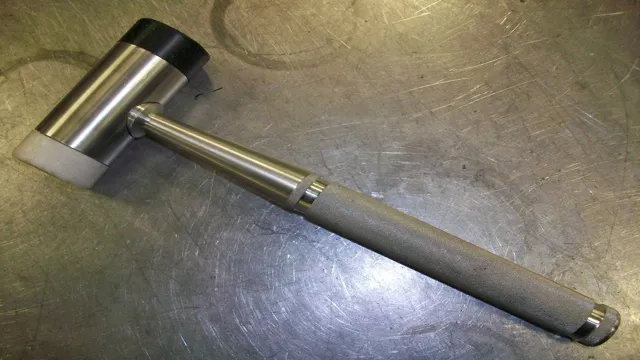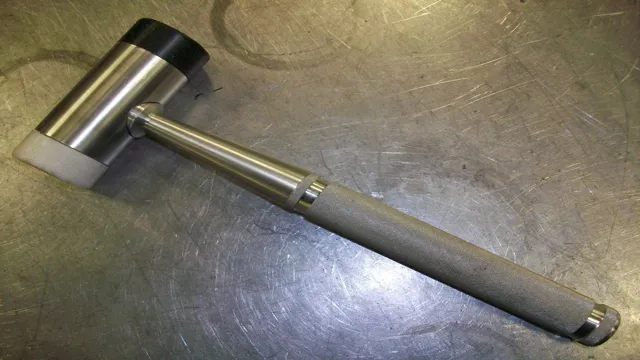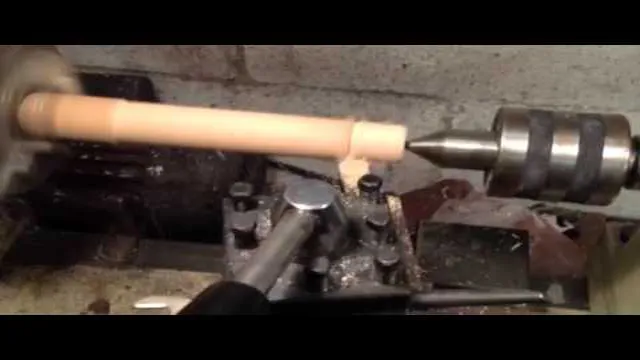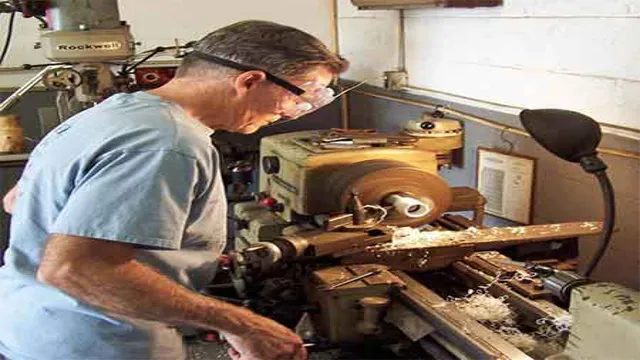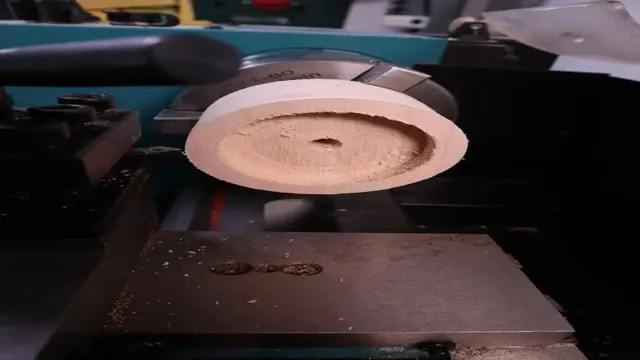How to Operate a Metal Lathe: A Beginner’s Guide to Turning and Cutting Metal

Metal lathes are fascinating machines that have been used for centuries to create all kinds of precision parts and components. Whether you’re a hobbyist or a professional machinist, learning how to operate a metal lathe is an essential skill that can open up a world of possibilities for creating your own unique projects. But if you’re new to this field, it can be a bit overwhelming to figure out where to start.
In this blog post, we’ll walk you through the basics of how to operate a metal lathe, from understanding the different parts and components to mastering the various techniques and tools. By the end of this post, you’ll have a solid foundation for working with metal lathes and the confidence to start creating your own amazing projects. So, let’s get started and dive into the exciting world of metal lathe operation.
Introduction
If you’re interested in metalworking or have a project that requires the use of a metal lathe, learning how to operate one is essential. A metal lathe is a powerful tool used to shape metal pieces into a specific shape, size, and thickness. Before you start using the machine, it’s important to ensure that you have the proper protective gear, such as safety glasses and gloves, and that the machine is correctly set up and adjusted.
Once you’ve taken the necessary precautions, it’s time to familiarize yourself with the various controls and features of the metal lathe. Understanding the functions of each control and learning how to operate them properly will enable you to create precise and high-quality metalwork that meets your specific needs. With a little practice and patience, you’ll soon be able to unleash your creativity and take your metalworking skills to the next level.
What is a metal lathe?
A metal lathe is a machine tool used in metalworking that is designed to shape and cut various metals. It works by holding a piece of metal in a rotating chuck and moving cutting tools against the spinning metal to create the desired shape and size. Depending on the type of lathe and the materials being used, the cutting tools can vary from simple handheld tools to complex, computer-controlled systems.
Metal lathes are an essential tool for any metalworker, machinist, or hobbyist who is looking to create precise metal parts or components. With the proper skills and training, a metal lathe can be used to create everything from small, intricate parts to larger, more complex structures. Whether you’re a professional metalworker or a DIY enthusiast, a metal lathe is a valuable tool that can help you create high-quality metalwork projects with ease.

Why use a metal lathe?
metal lathe If you’re a DIY enthusiast or a professional metalworker, a metal lathe should be a must-have in your toolkit. It is a versatile tool that enables users to cut, sand, drill, and shape different types of metal workpieces with precision and accuracy. With a metal lathe, you can create intricate designs, make parts for machinery, or perform repairs on metal objects.
Its uses are endless, making it an essential addition to any workshop. Whether you’re a mechanic, an engineer, or a metal crafter, a metal lathe can help you achieve your desired results quickly and easily. So, if you’re wondering why you need a metal lathe, keep reading to learn more.
Getting Started
If you’re looking to learn how to operate a metal lathe, there are a few key steps you’ll need to follow. Firstly, it’s important to familiarize yourself with the different parts of the machine, such as the headstock, tailstock, and spindle. You’ll also need to learn how to properly mount and secure your materials, whether you’re working with wood, metal, or plastic.
Additionally, it’s crucial to choose the right cutting tools and to understand the proper techniques for maintaining and sharpening them. Finally, safety is paramount when working with a metal lathe, so always make sure to follow safety guidelines and wear personal protective equipment like safety goggles and gloves. With practice and patience, mastering the art of operating a metal lathe can be a rewarding and valuable skill.
Important safety precautions
When it comes to any new endeavor, safety should always be a top priority. Before you dive headfirst into a new project or hobby, take some time to familiarize yourself with important safety precautions. This is especially true when it comes to anything that involves physical activity or tools.
One of the most important things you can do is to invest in proper safety gear. This might include gloves, eye protection, or even a hard hat depending on what you’re doing. You should also make sure you understand how to use any tools or equipment safely, and always follow manufacturer instructions carefully.
Whether you’re trying something new for the first time or have plenty of experience, it’s always better to err on the side of caution. By taking safety seriously from the start, you can make sure you can enjoy your new hobby without unnecessary risks or accidents.
Parts of a metal lathe
If you’re a beginner looking to get started on a metal lathe, it’s important to understand the different parts of this machining tool. With so many different components, it can be overwhelming to know where to begin. One of the most essential components is the bed, which is the foundation of the lathe that supports all the other parts.
The headstock is another key component that contains the spindle, chuck, and gears that drive the cutting tools. The tailstock, on the other hand, moves back and forth along the bed to support the other end of the workpiece. A cross-slide facilitates the movement of the cutting tool, while a compound rest enables the tool to be adjusted in several directions.
The apron contains essential gears and mechanisms that control the feed of the cutting tool along the workpiece. Finally, the chuck is the component that holds the workpiece securely in place while it is being machined. By understanding these various parts, you’ll be well on your way to mastering the metal lathe.
Machine maintenance
Machine maintenance is crucial in ensuring the smooth operation of any equipment. If you’re just getting started, it’s important to know the basics of machine maintenance. The first step is to design a maintenance plan that will suit the needs of your specific machine.
This should include a routine inspection of the machine, a list of parts that need to be frequently checked and replaced, a schedule for lubricating the machine, and a record-keeping system for any repairs or upgrades performed. It’s also important to ensure that the person responsible for the maintenance has the proper training and knowledge to perform the tasks needed. By investing in machine maintenance, you can improve the lifespan of your equipment and avoid costly breakdowns.
Don’t wait until something goes wrong, start taking care of your machine today.
Operations
If you’re new to using a metal lathe, it can be overwhelming at first. However, with some practice and knowledge of the basics, you’ll be able to operate it like a pro in no time. Here’s our step-by-step guide on how to operate a metal lathe: Firstly, ensure your workpiece is properly secured before turning on the machine.
Once it is securely in place, turn on the lathe and select the appropriate cutting tool. Adjust your tool height and depth, and set the speed of the spindle to match the type of metal and tool you’re using. Gradually lower the tool bit onto the work surface, making controlled cuts to avoid any accidents.
As you work, be sure to frequently check that your tool bit and coolant are properly lubricated to prevent any overheating. Lastly, remember to wear appropriate protective gear, and never leave your machine unattended while it’s running. By following these simple steps, you’ll be able to operate a metal lathe with confidence and precision.
Setting up the tool
To set up the tool effectively, it’s important to familiarize yourself with the operations involved. You’ll need to determine what tasks you want the tool to automate and which ones to keep manual. It’s also critical to understand the tool’s limitations and settings so you can optimize it accordingly.
Take your time to review the documentation and explore the tool’s features, which will make it easier to configure and customize it to suit your needs. Don’t hesitate to reach out to the vendor’s support team if you encounter any issues during the tool’s setup process. By understanding the operations involved and taking a methodical approach to setting up the tool, you can ensure that it runs smoothly and efficiently in the long term.
Selecting materials
When it comes to selecting materials for operations, there are a few factors that need to be kept in mind. The first consideration is the purpose of the operation. Will the materials be used for a temporary or permanent process? Will they be exposed to extreme conditions or hazardous chemicals? These questions will help determine what type of material is suitable.
The second factor is cost. The most cost-effective materials may not always be the best option for efficiency or longevity. Lastly, it is important to consider the impact of the materials on the environment.
Companies need to ensure that they are creating sustainable operations by using materials that are eco-friendly and can be recycled when the process is complete. By taking into account all of these factors, operations can be carried out with materials that not only meet their purpose but also benefit the environment.
Selecting speeds and feeds
Selecting the appropriate speeds and feeds is a crucial aspect of machining operations. This refers to the rates at which the cutting tool rotates and advances through each cut, respectively. The ideal combination of these parameters depends on several factors, including the material being machined, the type of tool being used, and the desired finish.
In general, higher speeds and feeds lead to faster machining times but may cause more wear and tear on the tool and require more frequent tool changes. As a result, determining the optimal speeds and feeds is often a balancing act that considers both efficiency and tool life. It is important to have an understanding of the available options to be able to make the best choice for a given application.
Cutting threads and shapes
One of the essential operations in machining is cutting threads and shapes. It involves the creation of various shapes and threads on materials, such as metals, plastics, and other materials. The process begins with selecting the appropriate tool, cutter, or die that corresponds to the material’s properties and desired outcome.
The next step is to set the workpiece on the lathe or shaping machine and carefully adjust the tool using precise measurements. The machine applies force to the tool, and the material undergoes cutting, drilling, or milling operations that create intricate shapes and detailed threads. The quality of the finished product depends on the accuracy of the tool and the operator’s expertise in controlling the machine’s movement.
This operation requires immense precision and skill to ensure that the final product meets the desired specifications and requirements. Whether it’s cutting threads for bolts or shaping complex parts for machinery, this operation plays a vital role in modern manufacturing.
Advanced Techniques
If you’re looking to take your metal lathe skills to the next level, there are a variety of advanced techniques you can explore. One technique is using different types of turning tools to achieve different shapes and finishes on your workpiece. High-speed steel tools are great for general purpose turning, while carbide-tipped tools offer longer tool life and can handle harder materials.
You can also experiment with different tool angles and feed rates to achieve specific effects. Another advanced technique is thread cutting, which requires precise measurements and careful cutting to create threads that match your project’s specifications. You can also explore drilling and boring with your metal lathe, which involves using specialized tools to create precise holes and bores in your workpiece.
Whatever technique you choose, remember to always prioritize safety and follow proper operating procedures to get the best results from your metal lathe.
Specialized operations
When it comes to specialized operations, advanced techniques are often required to ensure success. These operations may include high-risk scenarios such as hostage rescue missions, counter-terrorism operations, and other dangerous deployments. Specialized units within law enforcement agencies, military forces, and private security companies must undergo rigorous training to develop the necessary skills and knowledge to handle these situations.
One advanced technique that is commonly used is breaching, which involves breaking through barriers or locked doors in order to gain access to a secure location. Other techniques include fast roping, rappelling, and close-quarters combat tactics. These advanced techniques require intense focus, physical ability, and mental toughness.
By utilizing these specialized operations and techniques, law enforcement can successfully protect citizens and ensure public safety.
Troubleshooting common problems
Advanced Techniques for Troubleshooting Common Problems If you’ve exhausted all of the basic troubleshooting steps and you’re still experiencing issues, it’s time to turn to more advanced techniques. One of the most effective ways to troubleshoot complex problems is to break them down into smaller, more manageable pieces. Use a process of elimination to slowly narrow down the potential causes until you find the root of the problem.
Another advanced technique is to use diagnostic tools, such as network analyzers or error-checking software, to pinpoint the exact issue. These tools can provide more detailed information about what’s happening behind the scenes of your computer or network, allowing you to solve problems faster and more efficiently. By applying these advanced techniques to your troubleshooting efforts, you can improve your ability to diagnose and fix even the most complicated issues.
Don’t be afraid to get creative and experiment with different approaches to problem-solving, such as changing network settings or adjusting software configurations. Ultimately, the key to successful troubleshooting is persistence and a willingness to try different things until you find the solution. So keep at it, and don’t give up until you’re confident that the problem has been resolved.
Conclusion
In conclusion, operating a metal lathe is a craft that requires discipline, patience, and a good sense of humor. It’s like dancing with a machine, controlling the rhythm and flow of metal while never missing a beat. With the right tools and technique, you can create works of art and functional pieces that will stand the test of time.
So, whether you’re a seasoned pro or a greenhorn, remember to always respect the lathe, keep your fingers out of harm’s way, and embrace the occasional inevitable mistake with a smile and a fresh piece of metal. Happy turning!”
Tips for successful metal lathe operation
Advanced techniques are key to successful metal lathe operation. One of the most important techniques is knowing how to properly set speeds and feeds. Adjusting the spindle speed and the feed rate can help prevent tool breakage and ensure a smoother finish on the workpiece.
Another advanced technique is using a chamfering tool to create a beveled edge on the workpiece, which can improve the appearance and functionality of the finished product. It’s also essential to properly maintain and lubricate the lathe to keep it running smoothly and prevent wear and tear on the machine and tooling. By incorporating these advanced techniques into your metal lathe operation, you can achieve precise and high-quality results that meet your project’s specifications.
FAQs
What safety precautions should be taken while operating a metal lathe?
Some safety precautions to consider while operating a metal lathe include wearing personal protective equipment such as safety glasses and gloves, making sure the workpiece is secured in place, and keeping long hair and loose clothing away from moving parts.
How do I properly maintain my metal lathe?
Proper maintenance of a metal lathe involves lubricating moving parts, keeping the lathe clean and free of debris, checking and replacing worn out parts, and storing the lathe in a dry place.
How do I choose the right cutting tool for my metal lathe?
Choosing the right cutting tool for your metal lathe depends on factors such as the type of material being machined, the desired finish, and the cutting speed. Consult the lathe manual or a machining expert for specific recommendations.
What is the difference between a horizontal and vertical metal lathe?
A horizontal metal lathe operates with the workpiece mounted parallel to the ground, while a vertical metal lathe operates with the workpiece mounted perpendicular to the ground. Each type has its own advantages and disadvantages depending on the specific machining task.
How do I set the correct spindle speed for my metal lathe?
Setting the correct spindle speed on a metal lathe involves considering factors such as the type of material being cut, the diameter of the workpiece, and the desired cutting speed. Refer to the lathe manual or consult a machining expert for specific recommendations.
What is the purpose of a tailstock on a metal lathe?
The tailstock on a metal lathe is used to hold the other end of the workpiece in place while the lathe cuts, allowing for greater stability and precision during the machining process.
How do I align the cutting tool with the workpiece on my metal lathe?
Aligning the cutting tool with the workpiece on a metal lathe involves adjusting the tool post, checking the position of the tool with a dial indicator, and making any necessary adjustments before beginning the machining process.

